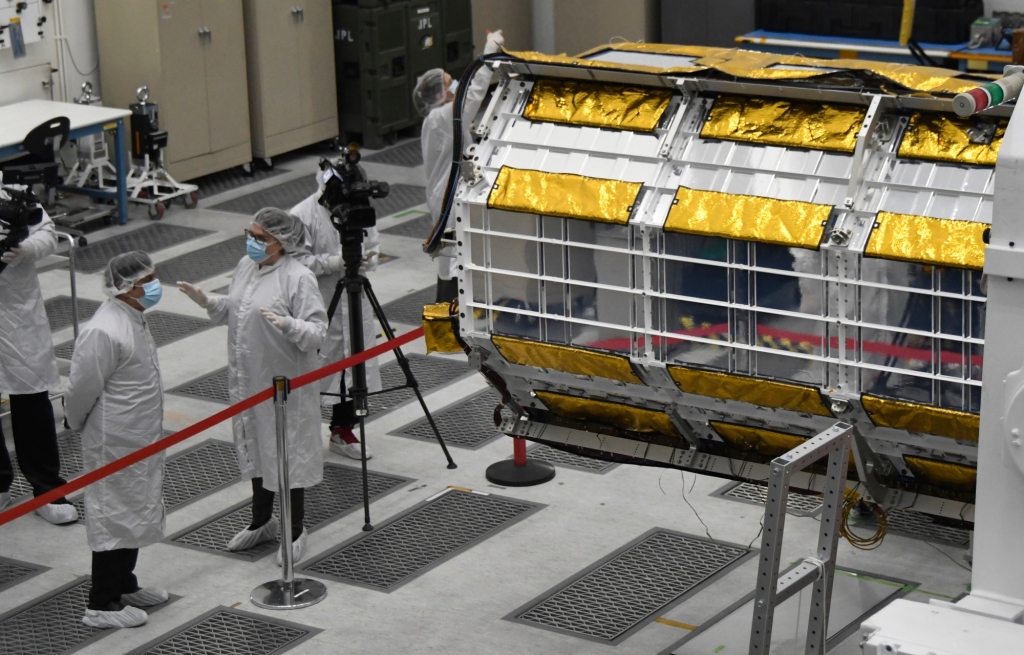American and Indian space-agency officials got a glimpse the groundbreaking NISAR system’s payload in a Jet Propulsion Laboratory clean room in Pasadena on Friday, Feb. 3.
NISAR – short for NASA-ISRO Synthetic Aperture Radar – is a high-tech satellite being jointly constructed by NASA and the Indian Space Research Organization.
It will soon move from Pasadena to India’s U R Rao Satellite Centre in the city of Bengaluru. There it will be merged with a spacecraft bus in preparation for a 2024 launch from Satish Dhawan Space Center.
“This marks an important milestone in our shared journey to better understand planet Earth and our changing climate,” said JPL Director Laurie Leshin. “NISAR will provide critical information on Earth’s crust, ice sheets, and ecosystems. By delivering measurements at unprecedented precision, NISAR’s promise is new understanding and positive impact in communities. Our collaboration with ISRO exemplifies what’s possible when we tackle complex challenges together.”
Members of the mission team joined reporters and Indian and U.S. space dignitaries to tour the High Bay 2 clean room, where they saw engineers and technicians putting the science instrument payload through final electrical testing.
Outside the facility, in front of a scale model of the NISAR satellite, NASA’s NISAR Project Manager Phil Barela and ISRO’s NISAR Project Director CV Shrikant ceremonially broke fresh coconuts. The tradition, common in India, signifies hope for a smooth journey, business partnership or personal venture, officials said. Leshin presented the ISRO delegation with a jar of JPL lucky peanuts, a longstanding tradition that reminds the team’s members to tackle all challenges with humility.
“Today we come one step closer to fulfilling the immense scientific potential NASA and ISRO envisioned for NISAR when we joined forces more than eight years ago,” ISRO Chairman S. Somanath said. “This mission will be a powerful…
Read the full article here







